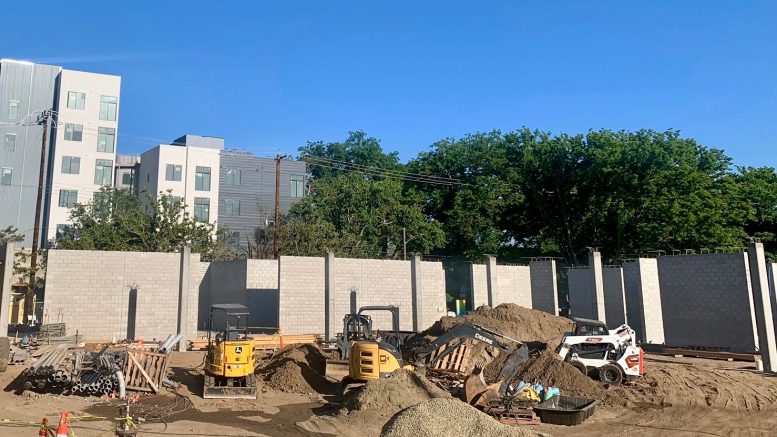By Ken Magri
In the challenge to build more affordable housing, the City of Sacramento may have something to brag about — though it’s of little consolation to renters who are being crushed at the moment.
According to an annual housing element progress report in April, Sacramento outperformed six other major California cities in producing affordable housing over the past several years.
Sacramento permitted 1,267 units of low-income and very-low-income units in 2022, which was 32 more units than in 2021, according to the report. City staff noted in a statement that “when measured against the population,” Sacramento’s affordable housing production between 2019 and 2021 was more than Oakland, San Jose, San Diego, Fresno, San Francisco and Long Beach.
Sacramento Mayor Darrell Steinberg characterized the news as a ray of hope. “The city council and the city staff have been very deliberate over the last five to seven years to aggressively prioritize affordable housing,” he said in the statement.
Last October, the Sacramento City Council approved more than $35 million to fund 820 new affordable housing units in six developments. These developments are located in various parts of the city, including on R Street and Stockton Boulevard, and in Oak Park.
A majority of these housing units are deed-restricted, which limits the rent or purchase price and requires occupancy by low-income residents for a set period of time. Current housing designs typically include state-of-the-art energy efficiency and access to mass transit. They are located near parks and retail shopping. Some projects also offer on-site case managers and social services for residents who need permanent support or are trying to escape homelessness.
Significant growth in ADUs
The city’s housing report also announced that the number of building permits issued for accessory dwelling units, or ADUs, in Sacramento increased by 32% in 2022 after soaring 124% in 2021.
ADUs are small, independent residential buildings, like a guest house, located on the same lot as a stand-alone single-family home. “The city has focused on increasing the construction of ADUs in the past few years,” according to the report.
The city provides free permit-ready building plans for studio, one-bedroom and two-bedroom units for homeowners who want to build an ADU on their property. These floor plans range from 367-square-feet up to 767-square-feet and are ready to hand off to a contractor. As long as they are built to specification, the city will streamline the permitting process for these ADUs for faster completion.
But Sacramento’s latest housing element report also makes it apparent that the city’s affordable housing production in 2022 missed the number of living units assigned by the state. While the number of issued permits last year was1,267, the average number of permits needed each year under the Regional Housing Needs Allocation goal is 2,096 for the three lowest-income categories, according to the housing report released in April.
This statewide quota from the RHNA mandates how much housing should be built in cities and counties across California. Since 1969, each community must produce a progress report every eight years detailing how their RHNA goals are being met.
Although Sacramento missed its goal, city officials emphasize that its 2022 housing production number “came close” and was “a rare accomplishment as most jurisdictions usually fall far short.”
“The Regional Housing Needs Allocation is very large because the methodology accounts for both housing units that we are behind in producing, as well as future housing needs,” says Greta Soos, associate planner for the City of Sacramento. “While it may feel unrealistic at times, we have a responsibility, both legally and ethically, to plan for, accommodate and encourage housing production at all income levels to meet our housing needs.”
Diane Luther, a local housing consultant, agrees that the RHNA goals are extremely high and difficult to reach. “Over the years the RHNA goals have been largely unmet without consequence until recently,” Luther says.
Some communities might pass housing moratoriums and vague planning review boards that delay housing development. Another tactic is downzoning a larger parcel that might accommodate multi-unit apartments into a single-family parcel.
In response, the California legislature passed Senate Bill 330, the Housing Crisis Act of 2019, which limits the ability of cities and counties to restrict development based on these tactics.
Earlier this month, Gov. Gavin Newsom’s administration filed suit against Elk Grove, claiming that the city discriminated against low-income residents by denying an affordable housing project last July. “Looking at the evidence, it’s clear that this project was denied because of the intended residents,” said California Attorney General Rob Bonta at the May press conference while announcing the suit.
Is Sacramento still well positioned for the future?
While funding affordable housing across the entire county will remain a challenge for years to come, the City of Sacramento worked over the last several years to develop more local sources of funds that can match state and federal funds and create a pipeline of developments.
“As a pro-housing city, we are extremely proud of that accomplishment,” Soos says. “We will continue to push for even more affordable housing production to meet our tremendous need.”
Besides Sacramento’s ability to secure funding streams, the city has another valuable resource for achieving its affordable housing goals.
“We are also blessed with more available empty or re-developable sites than other cities in California,” Luther says. “Sacramento has become a new mecca for nonprofit and for-profit developers of affordable housing.”
This story is part of the Solving Sacramento journalism collaborative. Solving Sacramento is supported by funding from the James Irvine Foundation and Solutions Journalism Network. Our partners include California Groundbreakers, Capital Public Radio, Outword, Russian America Media, Sacramento Business Journal, Sacramento News & Review, Sacramento Observer and Univision 19.



Be the first to comment on "Sacramento outperforms other major cities in affordable housing production but misses state quota"